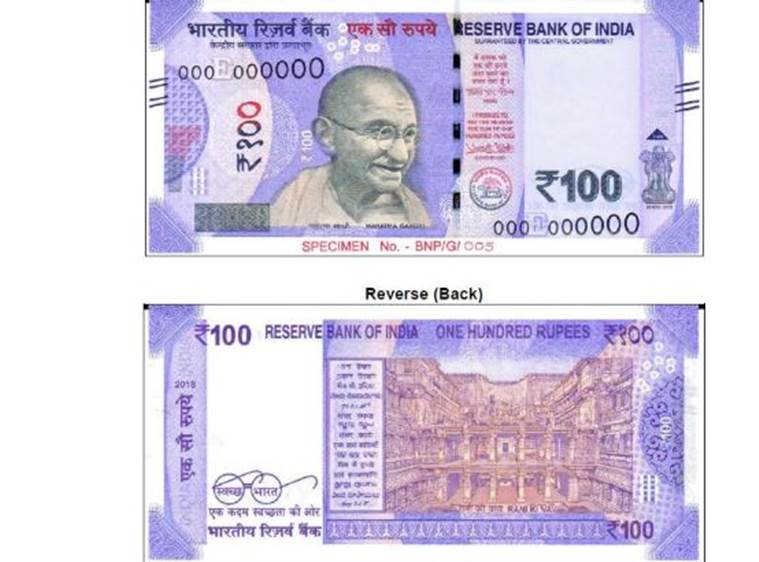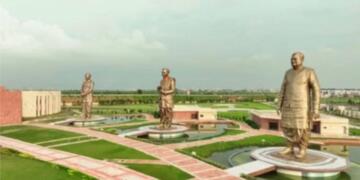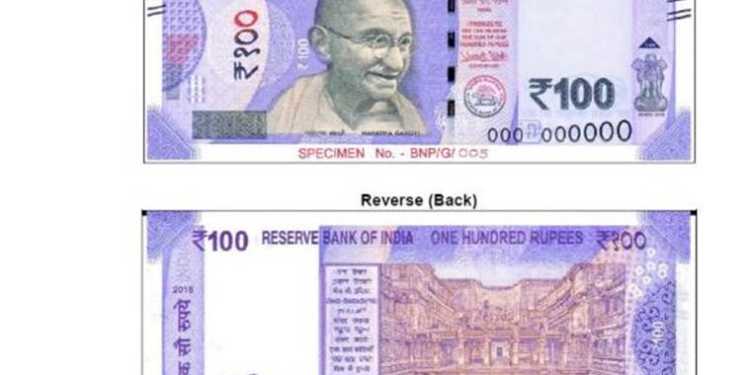If you have heard about the new Rs 100 ‘Lavender’ note by RBI, you must have noticed a monument on the reverse side. What is that? What is this monument and what makes it feature on the currency? Find all your answers here:
The Rs 100 note bear a motif of Rani ki Vav. It is a 11th-century world heritage site standing tall in Patan district of Gujarat, India.

Background story
The Rani ki Vav (Queen’s Stepwell) was built around 1050 AD. We often see around us several monuments from the history which were built by kings in the memory of their beloved queens. Rani ki Vav came was built in the memory of Bhimdev I (King Bhimdev was the founder of Solanki dynasty) by his widowed wife Queen Udayamati.
Architecture
Rani ki Vav was built in the complex Maru-Gurjara architectural style with an inverted temple with a depth of 30m. Constructed on the theme of Dasavataras (the ten incarnations of Lord Vishnu.) Having a width of 20m and length of 64m, the monument has seven levels of which five levels fall under the category of preserved levels. Reflecting the rich heritage of the Solanki dynasty, the walls of this monument have more than 500 principal sculptures including the images like those of apsaras and the sages.
Other interesting facts:
– Tunnel to Sidhpur
If you walk down the steps of the well, few steps away is a door that opens the way to a 30m tunnel. It ends in a small town called Sidhpur in Patan.
– Medical significance in ancient times
The water and medicinal plants from here were renowned for curing the viral and other ailments. Locals from the nearby areas used to visit the place to collect the desired elements to cure the diseases.
– Huge well
The well at the Rani kiVav is mighty to the extent that people look like an ant from the top.
How to reach?
It is 125 km from Ahmedabad, it opens from 8am to 6pm. The nearest airport is in Ahmedabad. It also well connected by road via public transport from Ahmedabad
The monument was added to the list of UNESCO’s World Heritage Sites on 22 June 2014.
Other notable features in the new Rs 100 notes are:
Guarantee Clause, Governor’s signature with Promise Clause and RBI emblem towards the right of Mahatma Gandhi portrait
Ashoka Pillar emblem on the right
Mahatma Gandhi portrait and electrotype (100) watermarks
Number panel with numerals in ascending font on the top left side and bottom right side
For visually impaired intaglio or raised printing of Mahatma Gandhi portrait, Ashoka Pillar emblem, raised triangular identification mark with micro-text 100, four angular bleed lines both on the right and left sides
Year of printing of the note on the left
Swachh Bharat logo with slogan
Language panel
The RBI said that the Rs 100 notes in the earlier series will continue to be legal tender. Like other notes, the new Rs notes also have silent features such as see-through register and latent image with denominational numeral 100. After the introduction of the bright pink Rs 2,000 banknote, gradually all the existing currency are getting redesigned. Since then, we have seen the introduction of banknotes in fluorescent blue and bright yellow, and chocolate brown colour. The central bank has re-designed Rs 10, Rs 50 note and issued Rs 200 denomination currency notes.
New 100 rupees currency notes to be released into the market soon. A proud moment for Gujarat, as a photo of Rani Ki Vav, a stepwell on the banks of river Saraswati is to be printed on the back side of the note. pic.twitter.com/6moOI7tEDf
— Dr Mansukh Mandaviya (मोदी का परिवार) (@mansukhmandviya) July 19, 2018






























